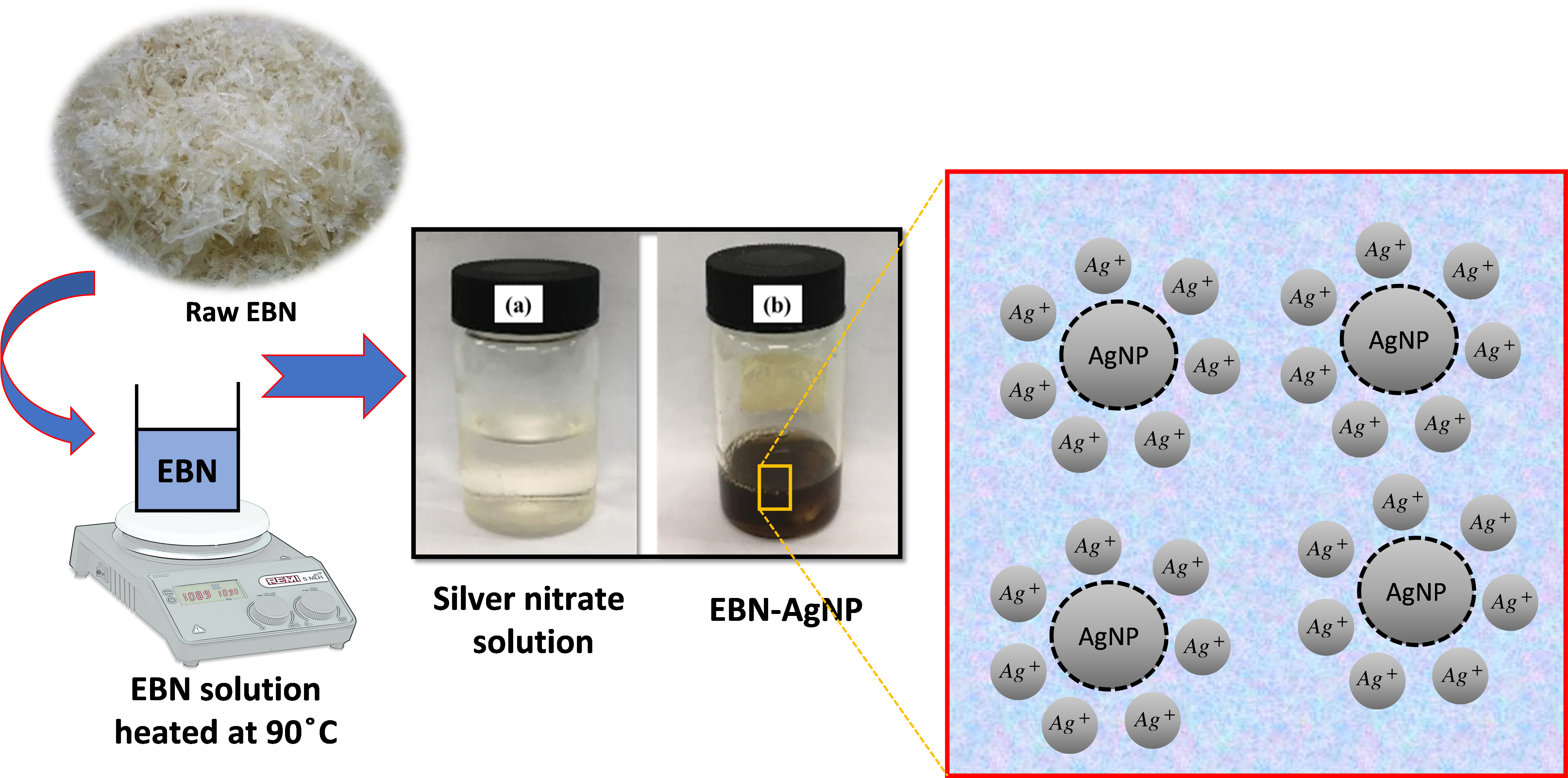Wed, Dec 25, 2024
[Archive]
Volume 21, Issue 2 (June 2024)
IJMSE 2024, 21(2): 1-10 |
Back to browse issues page
Download citation:
BibTeX | RIS | EndNote | Medlars | ProCite | Reference Manager | RefWorks
Send citation to:



BibTeX | RIS | EndNote | Medlars | ProCite | Reference Manager | RefWorks
Send citation to:
ZULKIFLI F. Biosynthesis of Silver Nanoparticles Reduced by Aerodramus Fuciphagus Extracts for Antibacterial Applications.. IJMSE 2024; 21 (2) :1-10
URL: http://ijmse.iust.ac.ir/article-1-3510-en.html
URL: http://ijmse.iust.ac.ir/article-1-3510-en.html
Abstract: (7672 Views)
Researchers are increasingly focusing on green synthesis methods for silver nanoparticles due to their cost-effectiveness and reduced environmental impact. In this study, we utilized an edible bird's nest (EBN), a valuable economic resource, as the primary material for synthesizing silver nanoparticles using only water as the solvent. Metabolite profiling of the EBN extract was conducted using LC-QTOF-MS in positive mode (ESI+), revealing the presence of lipids, glycosides, peptides, polysaccharides, and disaccharides. Upon the addition of silver nitrate to the aqueous EBN extract, noticeable color changes from transparent to brown indicated the successful formation of AgNPs. Subsequent characterization of these silver nanoparticles involved UV-Visible spectroscopy, which revealed an absorption peak at 421 nm. Further characterization was carried out using FESEM, ATR-FTIR spectroscopy, and EDX analysis. The involvement of phenolic agents, proteins, and amino acids in reducing the silver particles was confirmed. The synthesized nanoparticles exhibited a spherical shape, and a particle size ranging from 10 to 20 nm. The presence of elemental silver was confirmed by a strong, intense peak around 3 keV in the EDX spectrum. To assess their potential, the antibacterial properties of the silver nanoparticles against Escherichia coli and Staphylococcus aureus were evaluated using the agar diffusion method.
Type of Study: Research Paper |
Subject:
Biomaterials
Send email to the article author
| Rights and permissions | |
 |
This work is licensed under a Creative Commons Attribution-NonCommercial 4.0 International License. |







